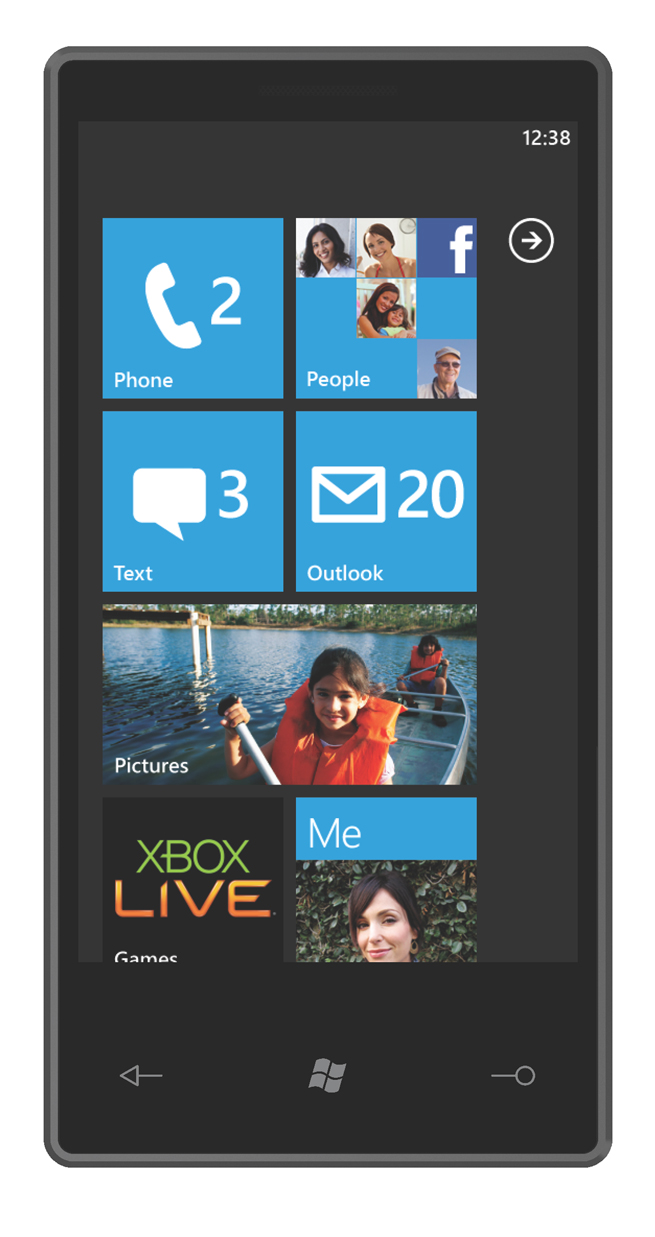Microsoft Revises and Renames Its Phone OS
Windows Mobile, Microsoft’s version of Windows for smartphones and other handhelds, is no more; “Windows Phone 7 Series” is the new and wildly inelegant moniker for what looks to be a quite different operating system from Microsoft. The name aside, Microsoft’s revised mobile operating system will emphasize being able to accomplish multiple tasks at the same time, in sharp contrast with the iPhone.
The iPhone and iPod touch currently allow only one program to run in the foreground while a variety of Apple-controlled processes perform background tasks such as sending and receiving email, accepting and displaying notifications, and playing music.
But competitors keep pushing on the notion that multiple active programs enable a smartphone to do more, while stating that quitting and launching programs is a worse experience than changing context – switching among multiple running programs. (Join in on a lively discussion on this matter in the comments on Adam Engst’s article “Does the iPhone OS Need Multitasking?,” 8 February 2010.)
Microsoft’s approach to this putative problem is to create what it’s calling hubs, each of which organizes specific kinds of tasks and applications. In one demo, the Start screen is split into square and oblong tiles that show live information from each of these hubs, such as updates from a social networking site like Facebook, or new photos from a picture site.
The demo shows a rather lovely and fluid approach to navigating among Microsoft-provided applications, which display and update data gathered from both Microsoft’s own services and third parties.
I spent a few weeks with a Zune HD last year, and was struck by how the Zune user interface had actually brought something new and attractive to the table. There were a few missteps, but using the Zune HD was fluid and intuitive; it had much in common with the flow of iPhone OS without looking or working like it in the least. It was also, thank goodness, entirely unlike the far more clunky mobile offerings by Microsoft. I liked using the Zune HD.
Windows Phone seems to bring these Zune notions to a broader, Internet-attached world. That could be great. Windows Mobile needs to be retired, and Apple, Google, Nokia, and Research in Motion could use serious competition, especially when they try relying on an installed base to avoid improving their offerings.
That said, the Windows Phone demo and surrounding details don’t show how third-party applications are integrated into the platform. Nor do we see more than skin deep. One of Windows Vista’s problems was that while it improved in many ways on Windows XP, you could scratch at the surface and XP dialog boxes – and even older cruft – were still there beneath a thin UI layer, demanding attention.
Windows Phone 7 Series won’t be turned into hardware by Microsoft, unlike its Zune, so we’ll have to see how the firms that have produced generations of Windows Mobile PDAs and phones manage this new operating system. This is much more how Microsoft normally operates, but it recalls the difference between Macs, where Apple exercises tight control over the hardware and the operating system, and Windows PCs, where overall usability is often hurt by each manufacturer making different hardware design decisions.

Microsoft - to its credit - has developed a different way of interacting with users.
However, it also has similarities to the iPhone:
1. It does not multitask
2. It doesn't support Flash
3. etc.
My initial impression of Microsoft's interface, however, is that of puzzlement. It does NOT look intuitive. It is NOT obvious how to use it.
How apps fit in is also a puzzle. Currently, Apps seem to be totally hidden by all of Microsoft's activity panes. This makes them much less convenient to use.
I'm not sure about the multitasking. The videos imply that. Does it not?